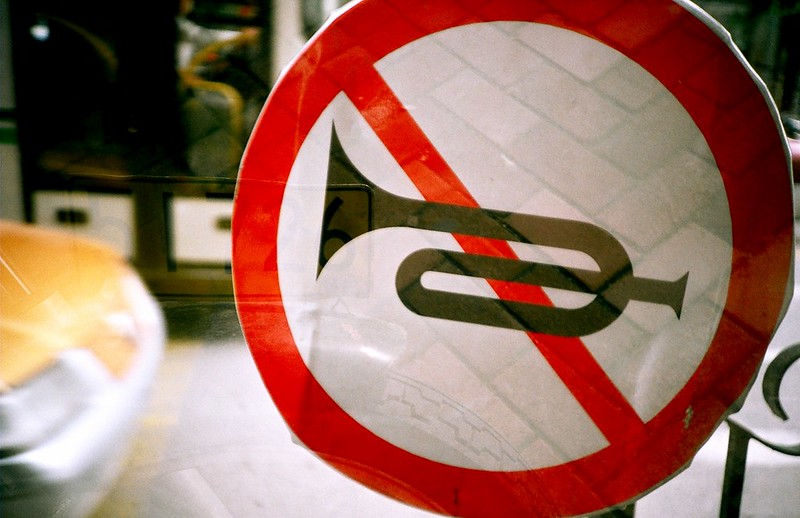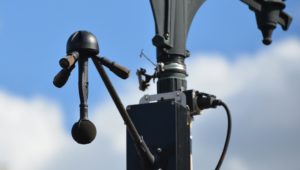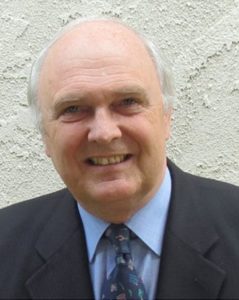
Photo: Carol Lin (Flickr)
How cities are fighting back against noise pollution
14 March 2022
by Christopher Carey
The dangers of polluted air are well known – some cities are now taking a similar approach to also crack down on urban noise. Christopher Carey looks at the technologies and policies that are emerging.
Ever had a pleasant city stroll interrupted by a loud motorcyclist revving their engine? As annoying as this may be, it’s usually a momentary blip you can soon forget about.
But for some, especially those living in inner cities, excessive noise is something that is present day in, day out.
And it’s not just a source of frustration – last month a UN Environment Programme (UNEP) report declared urban noise pollution one of the world’s “top emerging environmental threats”.
The World Health Organization (WHO) has classified traffic noise – including road, rail and air – as the second most significant cause of ill health in Western Europe, behind only air pollution.
Researchers found that high noise levels can contribute to an increased incidence of coronary artery disease and stroke, and can also have a serious impact on those living with autism and other developmental conditions.
While emissions of noise at source have been regulated in Europe and North America since the 1970s, monitoring sounds on city streets – and being able to establish whether they’re being caused by trains, planes or automobiles – has proved difficult, both from a technical standpoint and due to a general ambivalence around how serious the impacts of noise can be.
Needless noise
So what can cities do to reduce this problem? In Paris, environmental group Bruitparif is trying to find out.
Created in 2004 by the regional council of the Ile-de-France region, the group has been tasked with developing an infrastructure to monitor noise and ultimately help reduce it.
The organisation has three primary functions – gather data related to noise pollution, decode it, and make it easy for the general public to understand. It also helps to feed the data into local governments and develop public policies.

And with 9 million – or 75 percent – of the Paris region’s inhabitants exposed to noise levels that exceed the WHO’s recommendations, these policies are now evolving.
“All different kinds of noise in the city are of interest to us,” said David Bernfeld, Acoustic Engineer, Bruitparif.
“For example, we measure noise from cars, airplanes and trains, as well as lively night-time districts and neighbourhoods.”
The organisation currently holds the Guinness World Record for having the “largest urban noise monitoring network” on the planet, with 150 sensors that keep tabs on the worst offenders.
Enter the jellyfish
In 2016, Bruitparif developed the ‘Méduse’ or jellyfish sensor, which combines an omnidirectional microphone with an array of three-directional mics that allow researchers to pinpoint the origin of loud noise sources or track moving ones.
The sensors combine the microphones with a small low-power computer, and a 360-degree camera.

Once a second, sound picked up by the microphone is sent to the computer, which analyses the volume, frequency distribution, and sometimes the direction of origin, before transmitting these measurements to a central server.
“We’re now in stage one of a two-stage process,” Bernfeld said.
“The first stage consists of a technical approval, or acceptance test certification of the device.
“Stage two of the experiment is where the authorities will actually give tickets to drivers exceeding legal levels, and after that, if it’s accepted, it will be deployed on a national basis.”
Over the coming months the city will test whether the radars can accurately identify vehicle number plates, and if successful, will start issuing automated fines from early 2023.
“Too much noise makes people sick,” said Paris Deputy Mayor, David Belliard.
“For our health and quality of life…this first sound radar’s aim is to automatically issue fines for vehicles that make too much noise.”
London’s supercars
Similar acoustic camera technology was first used in 2020 in the London residential district of Knightsbridge, after Kensington and Chelsea Council received a flood of complaints from residents regarding loud supercar and motorbike engines.
Out of a total of 473 responses submitted by residents, over 90 percent said that revving engines frequently caused undue noise nuisance, annoyance, danger or harm to them or their property.
Responding to the complaints, the council installed four noise cameras, with one more set to be installed, at a total cost of £74,340 (US$99,500).

The scheme was designed to target drivers making excessive noise with £100 fixed penalty notices, which can be raised to £1,000 if the matter is heard in a magistrate’s court.
Since then, the council has issued fines to 144 drivers caught “racing or revving”, but added that the penalties were issued for breaches of the Public Spaces Protection Order (PSPO) when drivers began “sudden or rapid acceleration as to cause a public nuisance”.
“Making a noise [is not] the offence, it’s more how they drive to create the noise than a noisy vehicle that breaches the PSPO,” a council spokesperson said.
The borough recently expanded its enforcement area, and is monitoring reports of disturbances to know where to install cameras in the future.
“Recent data suggests that drivers are starting to know that our acoustic cameras will catch anti-social driving in action,” said Johnny Thalassites, Royal Borough of Kensington and Chelsea’s Lead Member for Planning, Environment and Place.
“Instances [of noise] have dropped since our pilot but we are still issuing fines to those who cause unnecessary distress through noisy and nuisance driving.”
“The technology is not cheap so we’ll be looking at funding streams and asking government – who set the limit for the fines – if we can issue higher fines to cover our costs and deter the worst offenders.”
What’s next?
As more cities wake up to the reality of noise pollution, new methods of detecting and enforcing excessive levels are emerging.
UK startup General Noise is currently developing what it claims will be the “second generation” of noise cameras which will integrate light detection and ranging (lidar) technology, instead of relying on microphones.

The firm was established by Robert G. W. Brown, a former scientist at the UK Ministry of Defence’s Royal Radar Establishment and Jason Dunne, founder of Exhausted.org.uk, a research think-tank dedicated to reducing the social and economic impact of vehicle noise.
After buying an unmodified radar gun from a police surplus store on eBay for US$500, the pair modified it in “essentially the most basic way” so that it could measure noise.
“Noise is very much where air pollution was 20 years ago – a fringe topic destined to go mainstream,” said Dunne.
“With the rise of quiet EVs, I believe the public’s tolerance of noisier vehicles will only shrink.”
Using radar or lidar lasers to measure noise – which the start-up claims is more accurate than microphones – the technology can be implemented using existing solutions like speed cameras.
“It’s the same system – we’re not changing the speed detection technology in any way, shape or form,” said Brown.

“All we’re doing is processing the data that it already gets differently – essentially taking the same radar signal and processing it in a different way to get noise instead of velocity.”
The firm has patented its method, and says it is currently in talks with several camera manufacturers to develop a product which it estimates could be one or two years away from going to market.
“Long term, the promise would be one box for both noise and speed,” added Dunne.
“Excessive noise has always been illegal – it’s just the police have not had the resources to enforce against it before, and automated enforcement hasn’t been there until the last couple of years.
“Making excessive noise has almost been normalised amongst the car community, and I think these cameras can be a good reminder that it was always illegal.”








